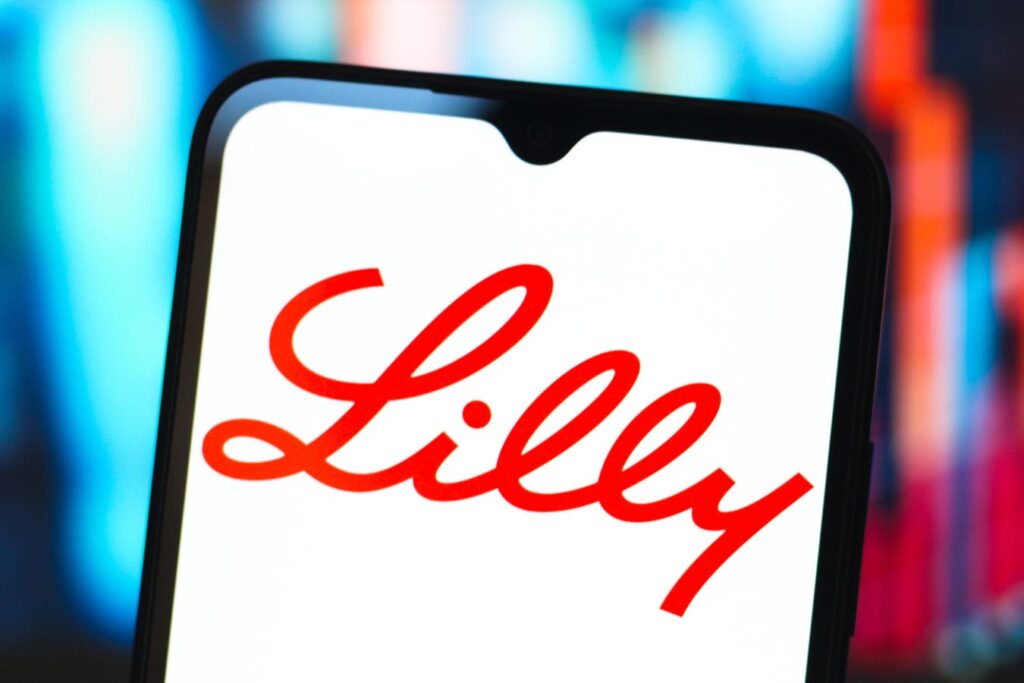Eli Lilly (NYSE:LLY) is set to disclose its earnings report on Thursday, May 1, 2025. For traders focused on events, the historical stock performance following earnings announcements can provide insightful information. In the past five years, LLY stock has generally exhibited an upward trend after earnings announcements. Specifically, the stock has recorded a positive one-day return in 55% of these occurrences. When the returns are positive, the median return has been 4.5%, with a peak single-day positive increase of 14.9%.
While the actual stock movement will ultimately hinge on how the reported results stack up against market expectations and consensus, grasping these historical trends may enhance trading chances. Traders could contemplate two primary strategies based on this historical data: either take a position before the earnings announcement to leverage the historical likelihood of a positive reaction or evaluate the relationship between immediate and medium-term returns after earnings are disclosed to guide future positioning.
Current consensus estimates forecast LLY’s earnings per share to be $3.46 on revenues of $12.72 billion. This indicates a noteworthy year-over-year increase compared to the previous period’s earnings of $2.58 per share on revenues of $8.77 billion, signifying an expected 34% rise in earnings and a 45% increase in sales. A significant contributor to this growth is the robust demand for LLY’s obesity medication, Zepbound, which is anticipated to yield $2.2 billion in sales. Furthermore, sales from Mounjaro are projected to reach around $3.75 billion.
From a fundamental standpoint, Eli Lilly presently has a market capitalization of $789 billion. Over the trailing twelve months, the company has generated $45 billion in revenue, resulting in an operating profit of $18 billion and a net income of $11 billion.
If you are looking for upside with less volatility than individual stocks, the Trefis High Quality portfolio offers an alternative — having surpassed the S&P 500 and produced returns over 91% since its inception.
See earnings reaction history of all stocks
LLY Stock Historical Odds Of Positive Post-Earnings Return
Some insights on one-day (1D) post-earnings returns:
- In the last five years, there have been 18 earnings data points recorded, with 8 positive and 10 negative one-day (1D) returns noticed. In total, positive 1D returns were observed approximately 44% of the time.
- This percentage increases to 45% when analyzing data for the last 3 years instead of 5.
- The median of the 8 positive returns is 4.5%, and the median of the 10 negative returns is -3.1%
Further information regarding observed 5-Day (5D) and 21-Day (21D) returns subsequent to earnings is compiled along with the statistics in the table below.
LLY Stock Correlation Between 1D, 5D, and 21D Historical Returns
A relatively less risky strategy (though it may not be effective if the correlation is weak) is to assess the correlation between short-term and medium-term returns post earnings, identify a pair with the strongest correlation, and execute the appropriate trade. For instance, if the correlation between 1D and 5D shows the highest correlation, a trader may position themselves “long” for the upcoming 5 days if the 1D post-earnings return is positive. Below is some correlation data based on both 5-year and 3-year (more recent) histories. Note that the correlation 1D_5D indicates the correlation between 1D post-earnings returns and subsequent 5D returns.
Is There Any Correlation of LLY Stock With Peer Earnings?
Occasionally, the performance of peers may influence post-earnings stock reactions. Indeed, pricing might start prior to the earnings announcement. Below is some historical data concerning the past post-earnings performance of Eli Lilly and its stock compared to the stock performances of peers that reported earnings just before Eli Lilly. For a fair comparison, peer stock returns also represent post-earnings one-day (1D) returns.
Discover more about Trefis RV strategy that has outperformed its all-cap stocks benchmark (a combination of all three: the S&P 500, S&P mid-cap, and Russell 2000), resulting in strong returns for investors. Additionally, if you desire upside with a smoother experience than an individual stock like Eli Lilly, consider the High Quality portfolio, which has outperformed the S&P and achieved returns greater than 91% since its inception.
Read the full article here
















